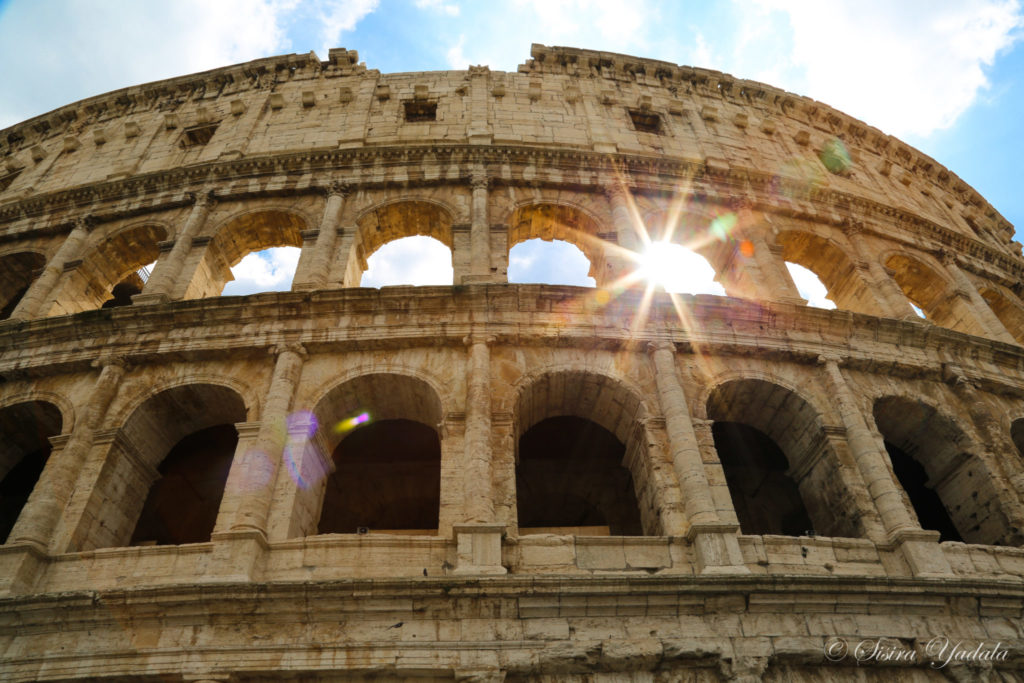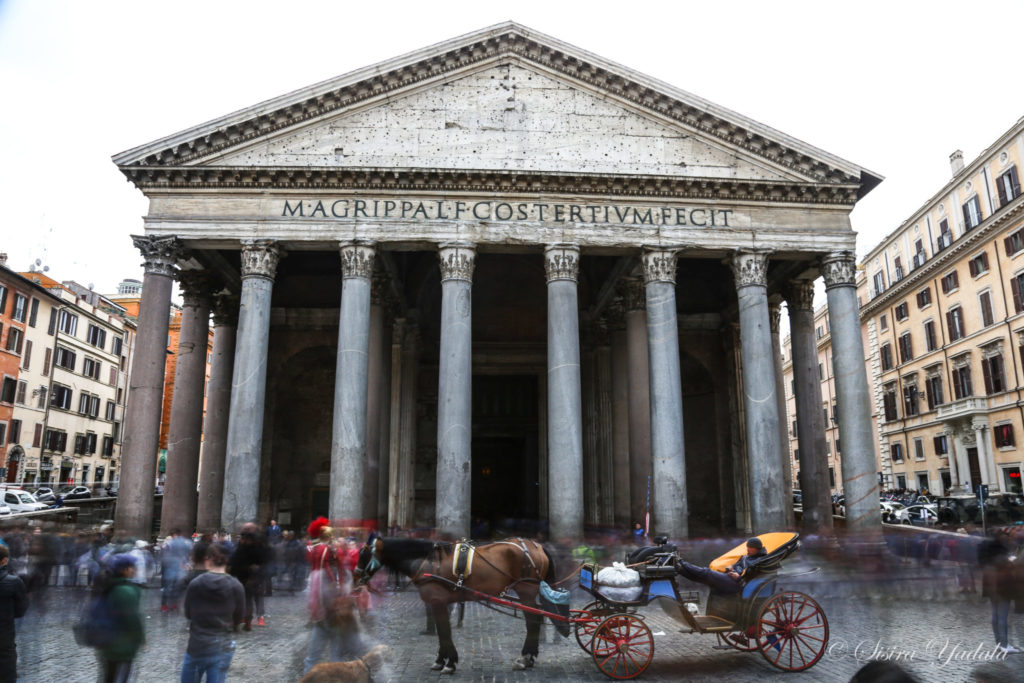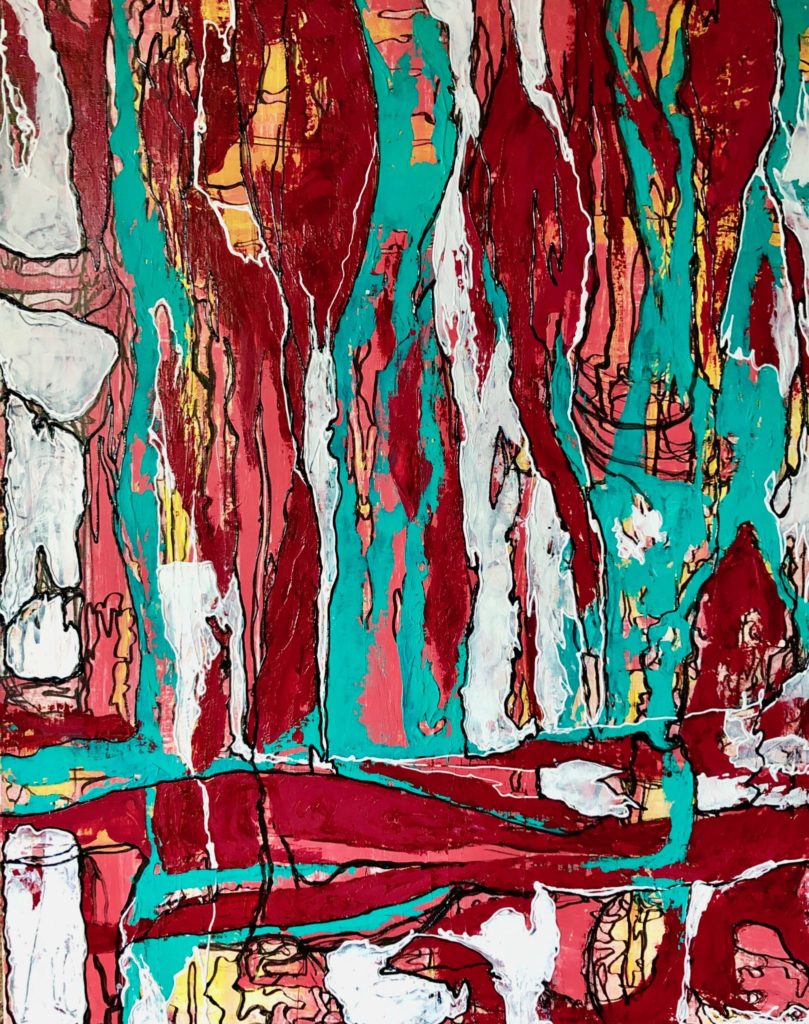
Sisira Yadala
Goddess of Victory on the summit of Vittoriano, Rome, Italy
Sisira Yadala, M.D., is an assistant professor and director of the Division of Epilepsy in the Department of Neurology at UAMS.

Sisira Yadala
Panorama of St Peter’s Basilica in Vatican City. A healthy spirituality has been increasingly recognized as promoting wellbeing and enhancing recovery from illness. We can be better physicians if we can incorporate our patients’ hopes, fears and beliefs into their therapeutic plans.
Sisira Yadala, M.D., is an assistant professor and director of the Division of Epilepsy in the Department of Neurology at UAMS.

Sisira Yadala
The sunrays shining through the Colosseum remind us of the paramount importance that fitness and sports played in shaping human history. Maintaining good fitness is one of the most important things one can do for physical and mental well-being.
Sisira Yadala, M.D., is an assistant professor and director of the Division of Epilepsy in the Department of Neurology at UAMS.

Sisira Yadala
The Pantheon is the oldest monument that has been continuously in use for about 2000 yrs. In this long exposure photograph, I tried to depict people (generations) changing while the Pantheon itself stands erect witnessing history, rise and fall of kingdoms, and changing times.
Sisira Yadala, M.D., is an assistant professor and director of the Division of Epilepsy in the Department of Neurology at UAMS.

Sisira Yadala
Rejuvenation of spirit with breathing in the unadulterated mountain air and pure joy of being in the clouds. Health is the greatest gift and nature the best healer.
Sisira Yadala, M.D., is an assistant professor and director of the Division of Epilepsy in the Department of Neurology at UAMS.

Sisira Yadala
I went to Boston to attend a Neurology conference where I listened to new ideas and research. On my way back I saw this beautiful and vibrant view of Boston harbor that perfectly reflected my state of mind!
Sisira Yadala, M.D., is an assistant professor and director of the Division of Epilepsy in the Department of Neurology at UAMS.
Mark Koch
“How we spend our days is, of course, how we spend our lives”
Dillard, 1989, p. 32

As long as I can remember, I have occupied my time making things – little rooms from scraps of wood, drawings that filled every available space on the church bulletin, shadow boxes, found object sculptures, paintings, etc. Throughout my childhood, “Entertain yourself,” was the steady refrain from my parents. Fortunately, finding ways to mitigate my boredom and loneliness through various forms of self-expression simultaneously fostered my creativity and imagination.
Even as a very young child, I was rarely without a means for recording my thoughts, feelings, or impressions. In fact, in almost every family photo album, there are images of me sacked out, fast asleep, or face down on the floor gripping a pen, pencil, crayon, or marker in mid flourish.
For a long time, I was obsessed with drawing mythological creatures like the kind I read about in C.S. Lewis’ Narnia chronicles. As a nine year old, I attempted to thoughtfully describe these imaginary beings as “gods and stuff” in a local newspaper profile after I won a bookmark design contest at the county library. Whenever I drew, I would fill page after notebook page with images of these fantastical horse-human-dragon-bird-fish hybrids.
I am not sure when I grew out of drawing “gods and stuff” or drawing in general. I wish I could find those notebooks. In high school, I transitioned to writing – mostly really bad poetry. Fortunately, very little of it survives – and I am just fine with those painfully abstract, precious musings being lost to the trashcan of time.
At 18, I spent a year in Denmark as an exchange student. During that year abroad, I saw so many beautiful places and things but did not fully grasp their aesthetic, cultural, social, or political significance. So when I returned home to start college, I studied art history. Around that time, a friend gave me a used set of oil paints she purchased at a yard sale, so I began my painting education, too. Because I did not know what I wanted to paint or how to manipulate the paint for my own ends, I stuck to small, abstract compositions. In this way, I learned how to use, handle, and blend colors, including discovering which brushes and strokes enabled the most nuanced modeling. I also figured out how to time the application of the slow-drying oils to create the dimensionality that I wanted.
A friend, who was also an art teacher, once told me that every artist must answer two questions:
Even though I have been painting for half of my life, I am still searching for answers to those questions.
In addition to being an occupational therapist and educator, I have been a collector and painter of early American folk art forms for well over two decades. As sources of inspiration and the frequent subject matter of my work, everyday objects from our near and distant past have had a strong influence on my creative process and output – from found object shadow boxes to oil on canvas still lifes.
I use a naïve style and process of painting popularized in New England in the 19th century called theorem painting (LeFever, 2009). Theorem means stencil or stenciled. Theorem painters used stencils to trace the outlines of their subjects on paper or cloth before filling in the empty forms with a layering of colors. I like the juxtaposition of hard (edge) and soft (interior) that theorem painting offers. The materials and process give me a clear parameter to follow and the freedom to fill in the space however I choose.
The process of bringing something, like an image or idea, into existence can be both frustrating and liberating. I encounter this paradox over and over when I paint. There are times when I am so preoccupied with the finished product every brushstroke becomes an encounter with mediocrity. The form and colors I choose feel derivative. I am a lightweight without a compass. I feel tethered to an invisible anchor. I am stuck and cannot find my way back to the beginner’s mind. But then, there are times when I am so focused that I become completely immersed in the sensations of the painting experience — like the feel of the brush in my hand or the varied amounts of pressure I must exert to create places where colors meet quietly on the canvas. Thoughts, emotions, and time falls away. Sometimes, I catch myself holding my breath, but still, I feel free, oblivious to the ticking clock or my worries. I am utterly without loose ends.
In Flow: The Psychology of Optimal Experience, Csikszentmihalyi (1990) writes, . . . “the best moments in our lives are not the passive, receptive, relaxing times . . . The best moments usually occur if a person’s body or mind is stretched to its limits in a voluntary effort to accomplish something difficult and worthwhile” (p. 3). Painting keeps me from becoming a spectator in my own life. It provides endless opportunities for in-the-moment awareness and a means for seizing my most valuable asset, time. The ever-present possibility of art as a mechanism for exercising my curiosity, freedom, humility, and acceptance is why I keep painting.
References
Csikszentmihalyi, M. (1990). Flow: The psychology of optimal experience. New York, NY: Harper & Row Publishers, Inc.
Dillard, A. (1989). The writing life. New York, NY: HarperCollins Publishers.
LeFever, G. (2009). Side by side, theorem painting. Early American Life Magazine, 56-65.
Mark Koch, OTD, OTR/L, is a clinical assistant professor in the Occupational Therapy Doctorate Program at the University of Arkansas and the University of Arkansas for Medical Sciences.

Marissa Miller
Acrylic on canvas, photographed by the artist.
This abstract piece was inspired by Marissa’s undergraduate education at The University of Texas at Arlington. She was inspired by muscle and bone physiology and thought she had completed the piece in 2015. During her first year of PA school at UAMS, she was inspired to revisit this piece after spending time in the gross anatomy lab. She finally completed the piece last year and it was chosen as a top 10 submission in the first annual UAMS IPE Art From The Heart event at the Arkansas Art Center.
Marissa Miller is a Physician’s Assistant student in the College of Health Professions at UAMS.

Lindsey Clark
The lab has so many beautiful colors. It would be a shame not to share them with the world. This is a side view of the same test tubes pictured in “Blood Bank Teaching on Target.”
Lindsey Clark, M.P.H., is an assistant professor in the UAMS College of Health Professions Department of Laboratory Sciences.
